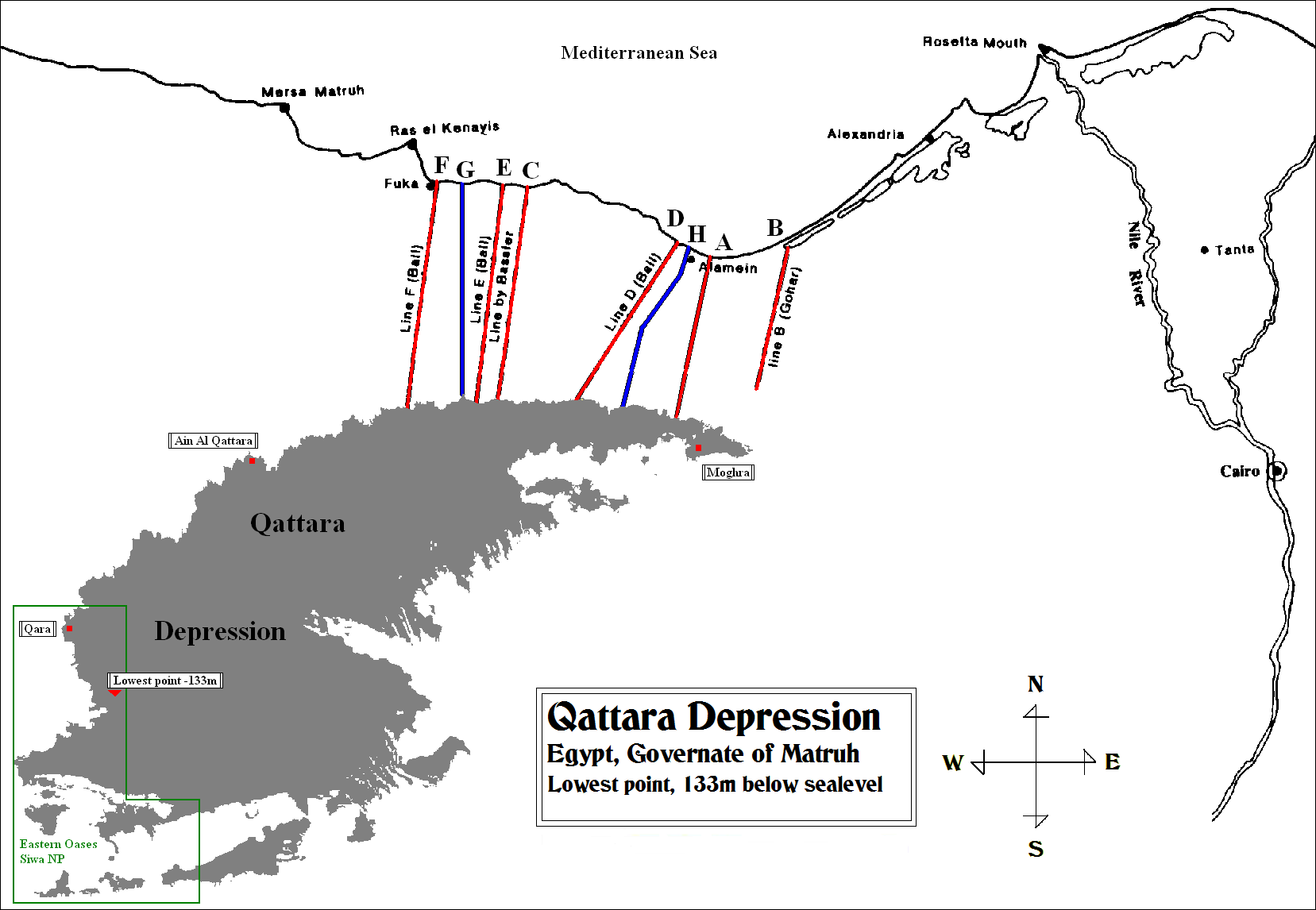I quote from the source of this map:
The Qattara Depression, in Egypt, is a swathe of land about the size of Lake Ontario that sits near the Mediterranean Sea, at an average depth of 200 meters below sea level. The Qattara Project was the brain child of a German hydrolic engineer named Friedrich Bassler who proposed digging a canal from the Mediterranean to flood the area. After about ten years, the water inside the depression would reach sea level. But the desert climate in the area would cause it to evaporate relatively rapidly, leading to a further influx of seawater. This ongoing flow was to be used to generate hydroelectricity. At the same time, the new, massive saline lake could transform a largely uninhabited desert area into a series of viable fishing communities. The part of the project where you dig a massive canal never penciled out as remotely cost-effective, but for some time the CIA maintained an interest in the project as part of its Cold War efforts to pull Egypt out of the Soviet orbit.There used to be proposals to use nuclear energy to dig huge canals. I wonder if such an approach would be feasible. Would such an approach change the economics of the project? As energy becomes more expensive in the future, will this project become economically feasible?
How about if desalinization of water becomes less expensive? Would provision of potable water in the desert make the project more attractive?
Would the project help ameliorate sea level rise due to global warming? If so, would those benefiting from the savings be willing to help pay for the project?
This is an old "engineers dream"!

No comments:
Post a Comment